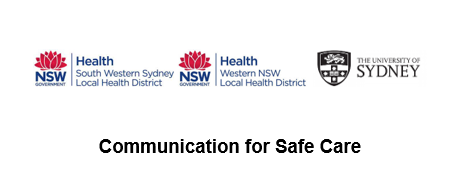Research
World leaders in treatments for people with cognitive-communication disorders (CCD) after traumatic brain injury (TBI).
Members of our team have led 70% of the world’s clinical trials for people with CCD after TBI. This map shows where our team’s research is being used in brain injury clinics and in training speech pathology students around the world.
Email us at [email protected] if you would like us to add your clinic or institution to the map.
Current projects:
The Social Brain Toolkit
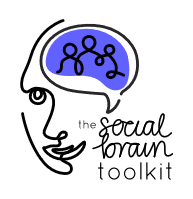 The Social Brain Toolkit project has developed new online tools to help improve everyday interactions between people with a brain injury and their communication partners. This project is supported by funding from icare NSW, and is being conducted in partnership with the University of Technology Sydney, Brain Injury Australia and Changineers.
The Social Brain Toolkit project has developed new online tools to help improve everyday interactions between people with a brain injury and their communication partners. This project is supported by funding from icare NSW, and is being conducted in partnership with the University of Technology Sydney, Brain Injury Australia and Changineers.
interact-ABI-lity: An online, self-guided short course about how to communicate successfully with people with a brain injury. For family, friends, support workers, and professionals working in brain injury. Sign up for the course here.
convers-ABI-lity: An online platform for people with brain injury and their communication partners to improve conversations together, with the support of a speech pathologist Coming soon.
social-ABI-lity: An online, self-guided short course for people with brain injury about using social media successfully and safely. Sign up for the course here.
What is the Communication for Safe Care Project?
This project is a collaboration between South Western Sydney and Western NSW Local Health Districts and the University of Sydney, funded through a National Disability Insurance Agency Mainstream Capacity Building Grant.
The goal is to create environments where people with a communication disability are able to have effective information exchanges in a health care setting.
We are helping teams assess their environment and work practices to understand what adjustments will make their environment and processes more accessible to people with a communication disability, assisting both patients and staff.
Effective communication will increase engagement and provide people with greater choice and control over their own health care, as well as improve staff satisfaction.
Click here to find out more about the project. You can contact the Communication for Safe Care Project Officer on [email protected].
Get involved
To learn more about our current research projects and opportunities to participate, visit the Opportunities section of our website.
Recent publications
Exploring Discussions About Virtual Reality on Twitter to Inform Brain Injury Rehabilitation: Content and Network Analysis

This Photo by Unknown Author is licensed under CC BY
This study found that commentary on ‘Twitter/X’ about using virtual reality (VR) in brain injury rehabilitation is limited with most posts being advertising material. Some users commented on considerations for VR development in brain injury rehabilitation including VR accessibility, app & hardware design, VR sickness, and technical issues. The findings highlight the need for further research on the needs and perspectives of people with brain injury and clinicians in relation to VR use for rehabilitation.
Brassel, S., Brunner, M., Campbell, A., Power, E., & Togher, L. (2024). Exploring Discussions About Virtual Reality on Twitter to Inform Brain Injury Rehabilitation: Content and Network Analysis. Journal of medical Internet research, 26, e45168. https://doi.org/10.2196/45168
What do speech pathologists think about using virtual reality with people who have a brain injury?

This study found that speech pathologists and virtual reality specialists had positive views regarding the use of virtual reality for the rehabilitation of cognitive-communication disorders following traumatic brain injury. This study also provided important considerations for using virtual with people with traumatic brain injury, with a list of recommendations included for clinicians.
Brassel, S., Brunner, M., Power, E., Campbell, A., & Togher, L. (2022). Speech-language pathologists’ views of using virtual reality for managing cognitive-communication disorders following traumatic brain injury. American Journal of Speech-Language Pathology. 1–17. https://doi.org/10.1044/2022_AJSLP-22-00077
Review: What cognitive and behavioral digital health interventions for people with traumatic brain injury are there?

This systematic review found that digital health interventions for people with traumatic brain injury (TBI) and their caregivers have been feasible and reported positive outcomes. However, few few studies to date have clearly described the intervention characteristics and further research regarding multi-modal digital health interventions is also needed.
Avramovic, P., Rietdijk, R., Attard, M., Kenny, B., Power, E., & Togher, L. (2023). Cognitive and Behavioral Digital Health Interventions for People with Traumatic Brain Injury and Their Caregivers: A Systematic Review. Journal of Neurotrauma, 40(3-4), 159-194. https://doi.org/10.1089/neu.2021.0473
New book: ACRM Cognitive Rehabilitation Manual & Textbook 2nd edition

Professor Leanne Togher was a contributing author to the Social Communication chapter of the new ACRM Cognitive Rehabilitation Manual & Textbook 2nd edition.
The ACRM Cognitive Rehabilitation Manual & Textbook Second Edition. https://acrm.org/meetings/cognitive-rehab-training-second-edition/
Scoping review: training resources for using social media after brain injury

This study found that training resources to support people with ABI in safely using social media are limited. Key content and features for web-based social media training were determined to inform future research that will aim to create resources that support people with brain injury to use social media.
Brunner. M., Rietdijk. R., Togher. L. (2022). Training resources targeting social media skills: A scoping review to inform rehabilitation for people who have an acquired brain injury. JMIR, 24(4), e35595. https://www.jmir.org/2022/4/e35595/
Developing social-ABI-lity – an online program to support social media use after brain injury

This study reports the development of the self-directed online program social-ABI-lity – the first of its kind to support people with an acquired brain injury (ABI) in using social media after their injury. This resource may help people with ABI to build their social media mastery and to participate in more positive and supportive online networks..
Brunner. M., Rietdijk. R. (Co-first author), Avramovic. P., Power. E., Miao. M., Rushworth. N., MacLean. L., Brookes. AM., Togher. L. (2022). Developing social-ABI-lity: an online course to support safe use of social media for connection after acquired brain injury. AJSLP (Invited paper for a Special Issue of Select Papers From the International Cognitive-Communication Disorders Conference), 00, 1– 17. https://doi.org/10.1044/2022_AJSLP-22-00099
Pilot study: social-ABI-lity program and moderated Facebook groups

This pilot study found that an intervention using the social-ABI-lity program and a private, moderated Facebook group improved outcomes for people with acquired brain injury (ABI) and they enjoyed the feeling of connection with others it gave them. Future research is planned that includes having peer moderators within the groups and taking a more individualised approach to delivery of the intervention.
Brunner M, Rietdijk R (Co-first author), Summers K, Southwell K, Avramovic P, Power E et al. (2022) ‘It gives you encouragement because you’re not alone’: A pilot study of a multi-component social media skills intervention for people with acquired brain injury. International Journal of Language & Communication Disorders (Invited paper for a Special Issue on SLT/P clinical management of traumatic brain injury across the lifespan), 00, 1– 16. https://doi.org/10.1111/1460-6984.12806
How can TBIBank support researchers, lecturers, and clinicians?

This article outlines the range of resources available in TBIBank for researchers, lecturers and clinicians who support people with communication disorders of traumatic brain injury. We detail the functions of the TBIBank Grand Rounds (an online multimedia teaching resource), the collaborative international research database, the discourse protocol and the automated language analysis program.
Elbourn, E., MacWhinney, B., Fromm, D., Power, E., Steel, J., & Togher, L. (2023). TBIBank: An international shared database to enhance research, teaching and automated language analysis for traumatic brain injury populations. Archives of Physical Medicine and Rehabilitation [Online ahead-of-print]. https://doi.org/10.1016/j.apmr.2022.12.192
How can co-constructing conversations help people with brain injury?
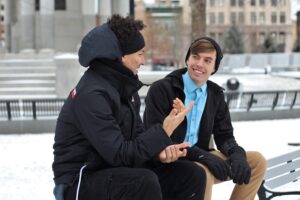
This study found that co-constructed communication interventions may offer a useful, replicable way to target aspects of everyday communication for adults with brain injury. The synthesis of the current evidence base in this paper encourages clinicians to make informed, evidence-based decisions around these interventions.
Hall, Z., Elbourn, E., Togher, L., & Carragher, M. (2023). Co-constructed communication therapy for individuals with acquired brain injury: A systematic review. International Journal of Language & Communication Disorders. [Online ahead-of-print]. https://doi.org/10.1111/1460-6984.12841
How do people with traumatic brain injury feel about their communication recovery?

Social communication interventions were perceived as a priority for intervention by people with TBI in this study. Facilitating ownership of the recovery process, supporting positive illness narratives and offering long-term supports were also key aspects of recovery.
Elbourn, E., Brassel, S., Steel, J., & Togher, L. (2022). Perceptions of communication recovery following traumatic brain injury: A qualitative investigation across 2 years. International Journal of Language & Communication Disorders. [Online ahead-of-print]. https://doi.org/10.1111/1460-6984.12795
How should people with brain injury be supported with using social media?
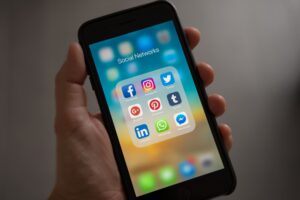
Research led by Dr Melissa Brunner has found people with TBI need training and access to a support network to use social media successfully.
Brunner, M., Hemsley, B., Togher, L., Dann, S., & Palmer, S. (2021). Social media and people with traumatic brain injury: a metasynthesis of research informing a framework for rehabilitation clinical practice, policy, and training. American Journal of Speech-Language Pathology, 30, 19-33. https://doi.org/10.1044/2020_AJSLP-20-00211
How can we help people with brain injury share their stories more clearly?

A team led by Dr Joanne Steel from the University of Newcastle has outlined the features of effective treatments to improve story telling after brain injury.
Steel, J, Elbourn, E., & Togher, L. (2021) Narrative discourse intervention after traumatic brain injury: A systematic review of the literature. Topics in Language Disorders, 41, 47-72. https://doi.org/10.1097/TLD.0000000000000241
What do people with brain injury think about using telehealth?

A study led by Dr Rachael Rietdijk has highlighted the advantages and disadvantages of telehealth, from the perspectives of people with brain injury.
Rietdijk, R., Power, E., Attard, M., & Togher, L. (2020). Acceptability of telehealth-delivered rehabilitation: Experiences and perspectives of people with traumatic brain injury and their carers. Journal of Telemedicine and Telecare, https://doi.org/10.1177/1357633X20923824
Evidence-Based Practice for Speech Pathology in Australia
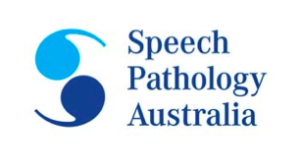
Professor Leanne Togher was an invited member of the working group that developed this new document which states that responsibility for Evidence-Based Practice is shared, requiring the successful interplay and contributions of the Association and its members, universities, speech pathology students and workplaces..
Speech Pathology Association of Australia (2021). Evidence-Based Practice for Speech Pathology in Australia, Melbourne, Australia: Speech Pathology Australia.
What interventions are there for cognition and cognitive-communication after acquired brain injury?
![]()
Professor Leanne Togher was an invited member of the working group that revised these evidence-based guideleines for effective interventions to improve cognition and cognitive-communication after brain injury.
Marshall S, Welch-West P, Ferri C, Faltynek P, Janzen S, Togher L, Teasell R. (2021). Interventions for Cognition and Cognitive-Communication Post Acquired Brain Injury. In Teasell R, Cullen N, Marshall S, Janzen S, Faltynek P, Bayley M, editors. Evidence-Based Review of Moderate to Severe Acquired Brain Injury. Version 13.0: p1-175.
Review: How effective is communication partner training for people with a traumatic brain injury?

This review outlines what is known about the effectiveness of communication partner training for people with a traumatic brain injury.
Behn, N., Francis, J., Togher, L., Hatch, E., Moss, B., Hilari, K. (2021). Description and effectiveness of communication partner training in TBI: A systematic review. Journal of Head Trauma Rehabilitation, 36 (1), 56-71.
New book chapter: Living with cognitive communication disorders
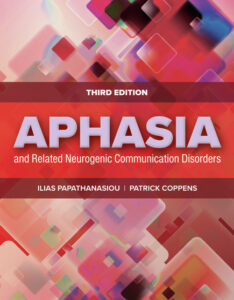
Hoepner, J. & Togher, L. (2022). Living with cognitive communication disorders, (Chapter 22, 543-580). Aphasia and related neurogenic communication disorders, 3rd Edition. Papathanasiou, I. & Coppens, P. (Eds). Burlington, MA: Jones & Bartlett.
New book chapter: Assessment and treatment of speech and language disorders following traumatic brain injury
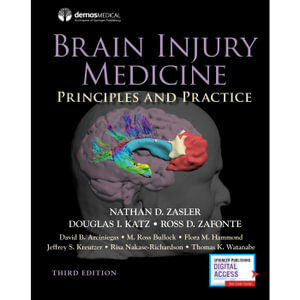
Togher, L., Elbourn, E. & Keegan, L (2021). Assessment and treatment of speech and language disorders following traumatic brain injury. (Chapter 67, 1026-1039). In Brain Injury Medicine, Third Edition, Nathan Zasler, Douglas Katz, Ross Zafonte (Eds), New York: Demos Medical.
Why should we look at humour in our clinical assessments with people who have a traumatic brain injury?

This paper outlines how analysing humour in discourse can provide clinicians with important information about the linguistic strengths of people with cognitive communication difficulties.
Keegan, L. & Togher, L. (2021). Discourse analysis of humor after traumatic brain injury. American Journal of Speech Language Pathology, 30 (2), 949-961, doi: 10.1044/2020_AJSLP-20-00059.
Review: Narrative discourse interventions after traumatic brain injury
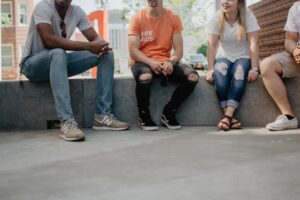
This review identified that current narrative discourse interventions do not typically feature personally meaningful materials. Future directions are suggested for clinical practice and research in treating narratives.
Steel, J., Elbourn, E. & Togher, L. (2021). Narrative discourse intervention after traumatic brain injury: A systematic review of the literature. Topics in Language Disorders, January/March 2021 – Volume 41 – Issue 1 – p 47-72, doi: 10.1097/TLD.0000000000000241


